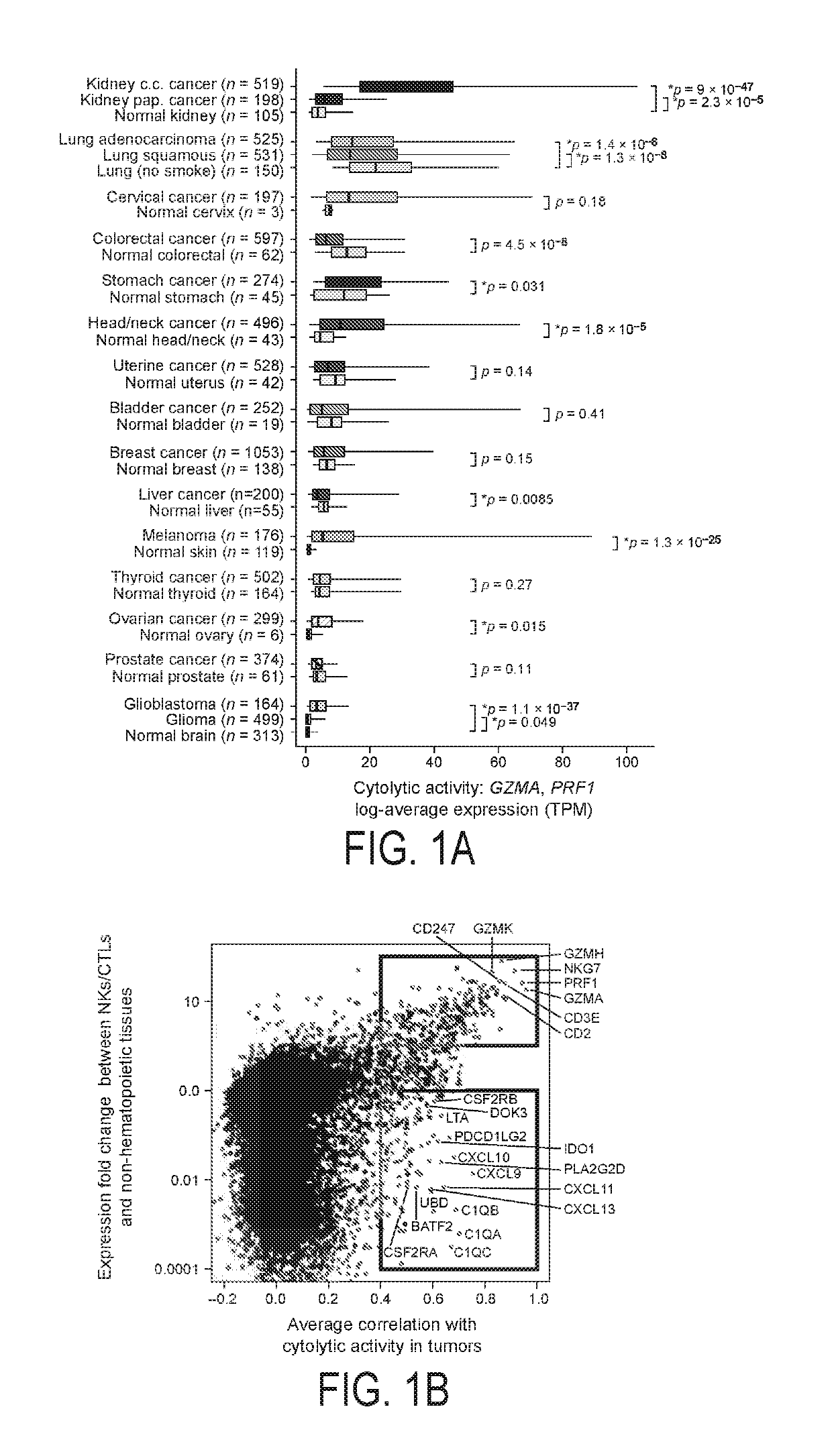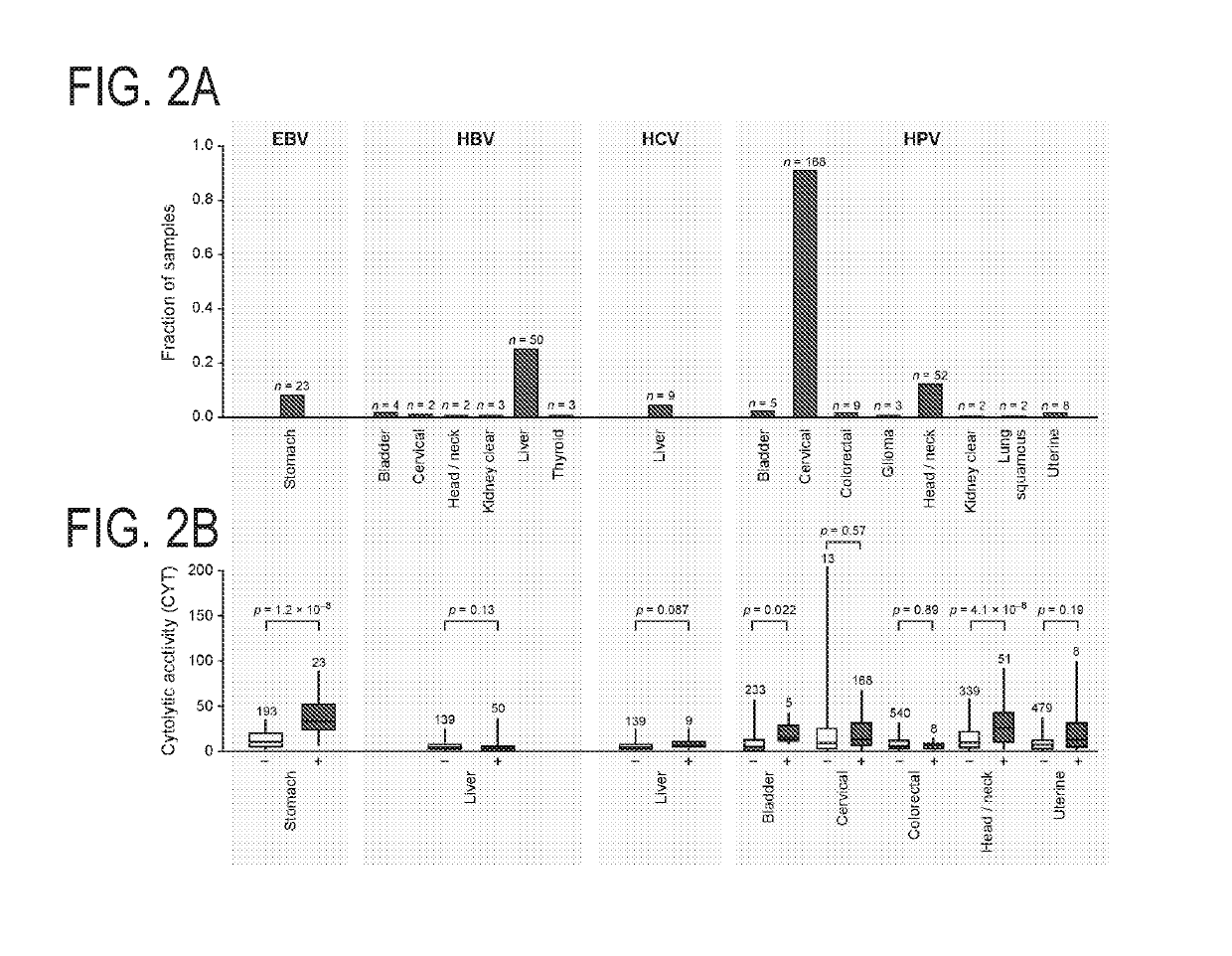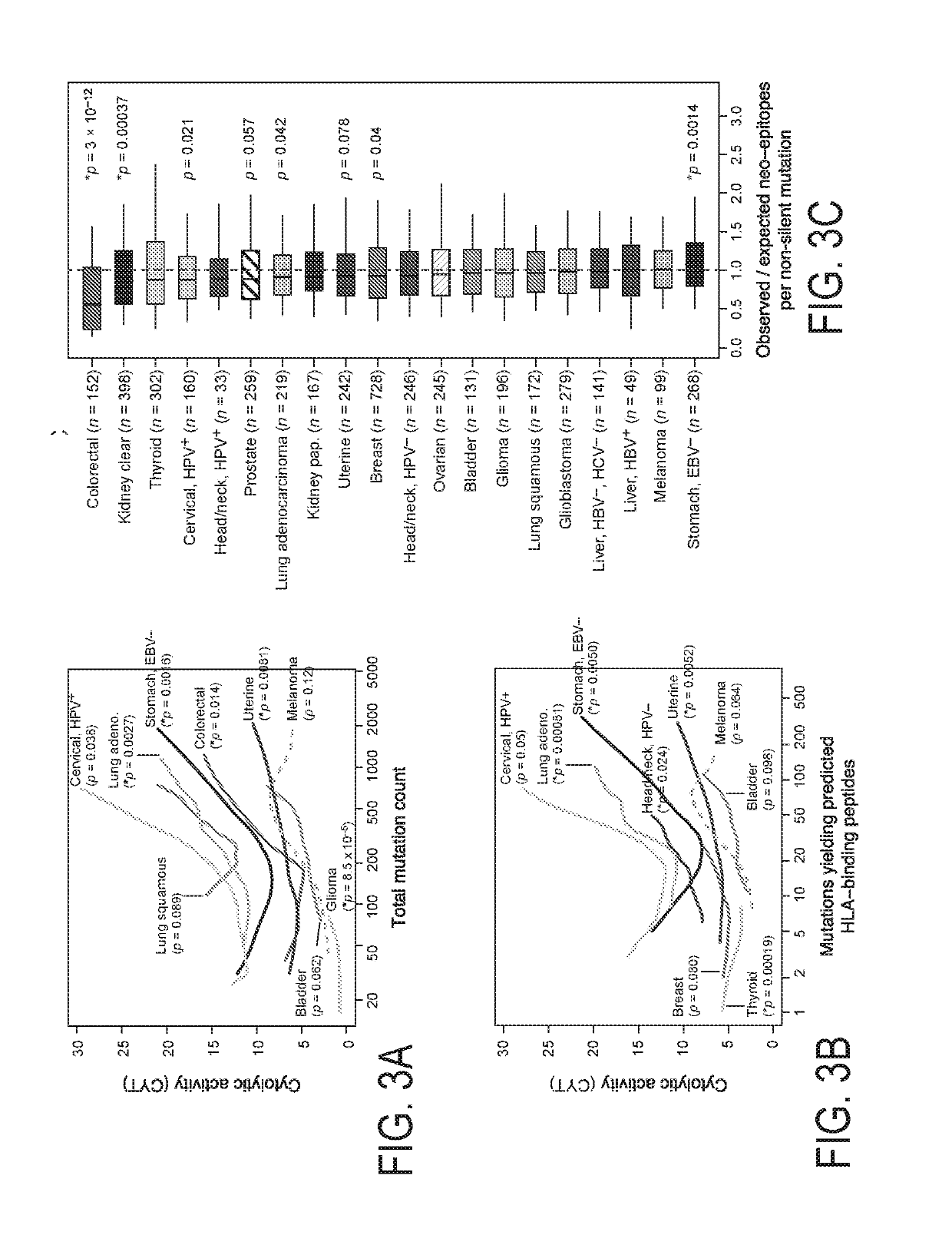Molecular biomarkers for cancer immunotherapy
a cancer immunotherapy and molecular biomarker technology, applied in the field of neoplasia diagnosis and treatment, can solve the problem that the intersection between the genomic landscape of cancer and anti-tumor immunity has not been systematically surveyed
- Summary
- Abstract
- Description
- Claims
- Application Information
AI Technical Summary
Benefits of technology
Problems solved by technology
Method used
Image
Examples
example 1
A Metric for Immune Cytolytic Activity Based on Gene Expression in TCGA Tumors
[0500]To study immune effector activity in solid tumors, Applicants focused on cytotoxic T cells (CTL) and natural killer cells (NK) because of their potent ability to kill tumor cells and numerous studies showing that effector T cells at the tumor site predict favorable outcome across many cancers (Pages et al., 2005; Sato et al., 2005; Schumacher et al., 2001). Using RNA-Seq data from >7000 TCGA solid tumor biopsies, Applicants devised a simple and quantitative measure of immune cytolytic activity (‘CYT’) based on transcript levels of two key cytolytic effectors, granzyme A (GZMA) and perforin (PRF1), which are dramatically upregulated upon CD8+ T cell activation (Johnson et al., 2003) and during productive clinical responses to anti-CTLA-4 and anti-PD-L1 immunotherapies (Ji et al., 2012) (Herbst et al., 2014). Consistent with their coordinated roles, GZMA and PRF1 were tightly co-expressed in TCGA sampl...
example 2
[0502]Cytolytic Activity is Associated with Counter-Regulatory Immune Responses and Improved Prognosis
[0503]To determine whether cytolytic activity is associated with other immune cell types and functions, Applicants calculated the enrichment of 15 immune cell type and function gene sets in the same samples (Table 1; expression data from Fantom5 project (Fantom Consortium et al., 2014)). While CYT showed moderate correlation with B cells and weak correlation with macrophages and, it showed strong correlation with: (i) CTL markers, as expected; (ii) plasmacytoid dendritic cells; (iii) counter-regulatory Tregs and known T-cell co-inhibitory receptors, as seen in chronic inflammatory conditions (FIG. 8F) (Lund et al., 2008). Applicants note that expression of the pre-defined gene sets was similarly enriched in most tumor and normal tissues, with some notable differences (FIG. 8G)). Finally, when Applicants looked for CYT correlations with any transcript (filtering out CTL and NK genes)...
example 3
[0505]Tumor Cytolytic Activity is Associated with Oncogenic Viruses in Some Tumors
[0506]Viruses account for a subset of malignancies and are also known to activate high affinity antigen-specific CTLs against non-self viral antigens. Thus, Applicants tested for correlation of cytolytic activity levels with transcripts from oncogenic viruses—including Epstein Barr virus (EBV), hepatitis B and C (HBV and HCV), human papilloma virus (HPV), Kaposi sarcoma virus (KSV), and polyoma viruses.
[0507]Consistent with previous analysis of TCGA data (Tang et al., 2013), HPV infection was most abundant in cervical cancer (91%), but also frequent in head and neck cancer (12%; with more men than women, OR=4.9; p=8.5e-4) and bladder cancer (2%). Applicants also observed occasional cases in colorectal, kidney clear cell, glioma, lung squamous cell carcinoma, and uterine cancer (FIG. 2A). Only stomach cancer demonstrated definitive instances of EBV infection (8%; Table S2A), which was associated with hi...
PUM
| Property | Measurement | Unit |
|---|---|---|
| tumor resistance | aaaaa | aaaaa |
Abstract
Description
Claims
Application Information
 Login to View More
Login to View More - R&D
- Intellectual Property
- Life Sciences
- Materials
- Tech Scout
- Unparalleled Data Quality
- Higher Quality Content
- 60% Fewer Hallucinations
Browse by: Latest US Patents, China's latest patents, Technical Efficacy Thesaurus, Application Domain, Technology Topic, Popular Technical Reports.
© 2025 PatSnap. All rights reserved.Legal|Privacy policy|Modern Slavery Act Transparency Statement|Sitemap|About US| Contact US: help@patsnap.com



